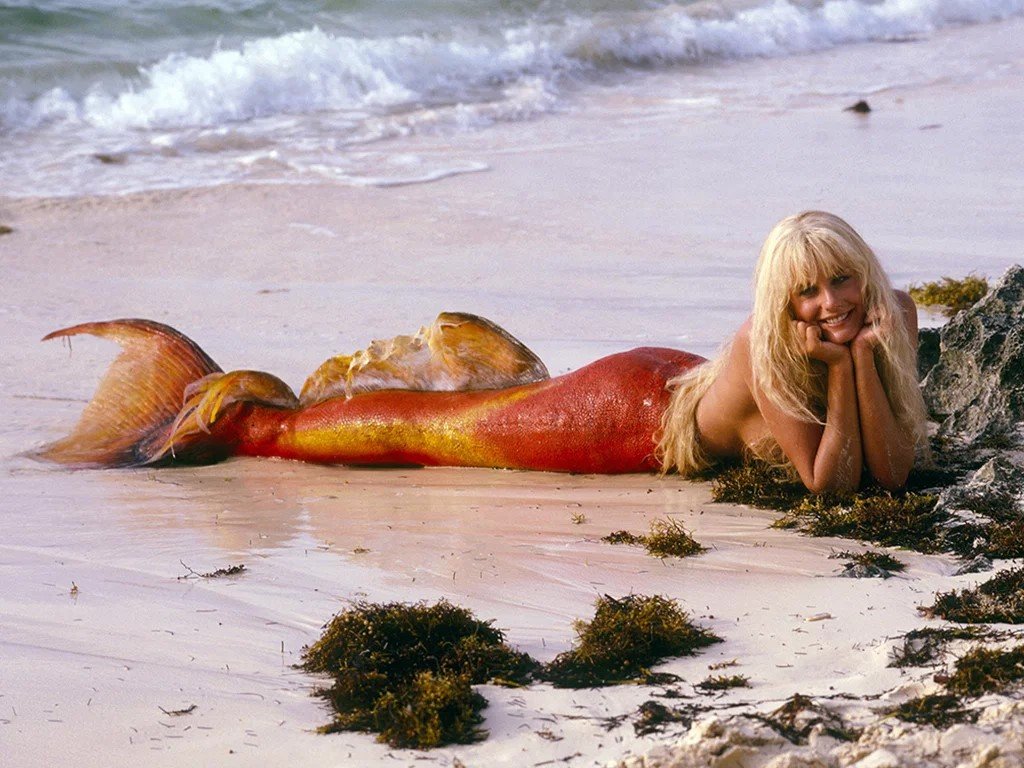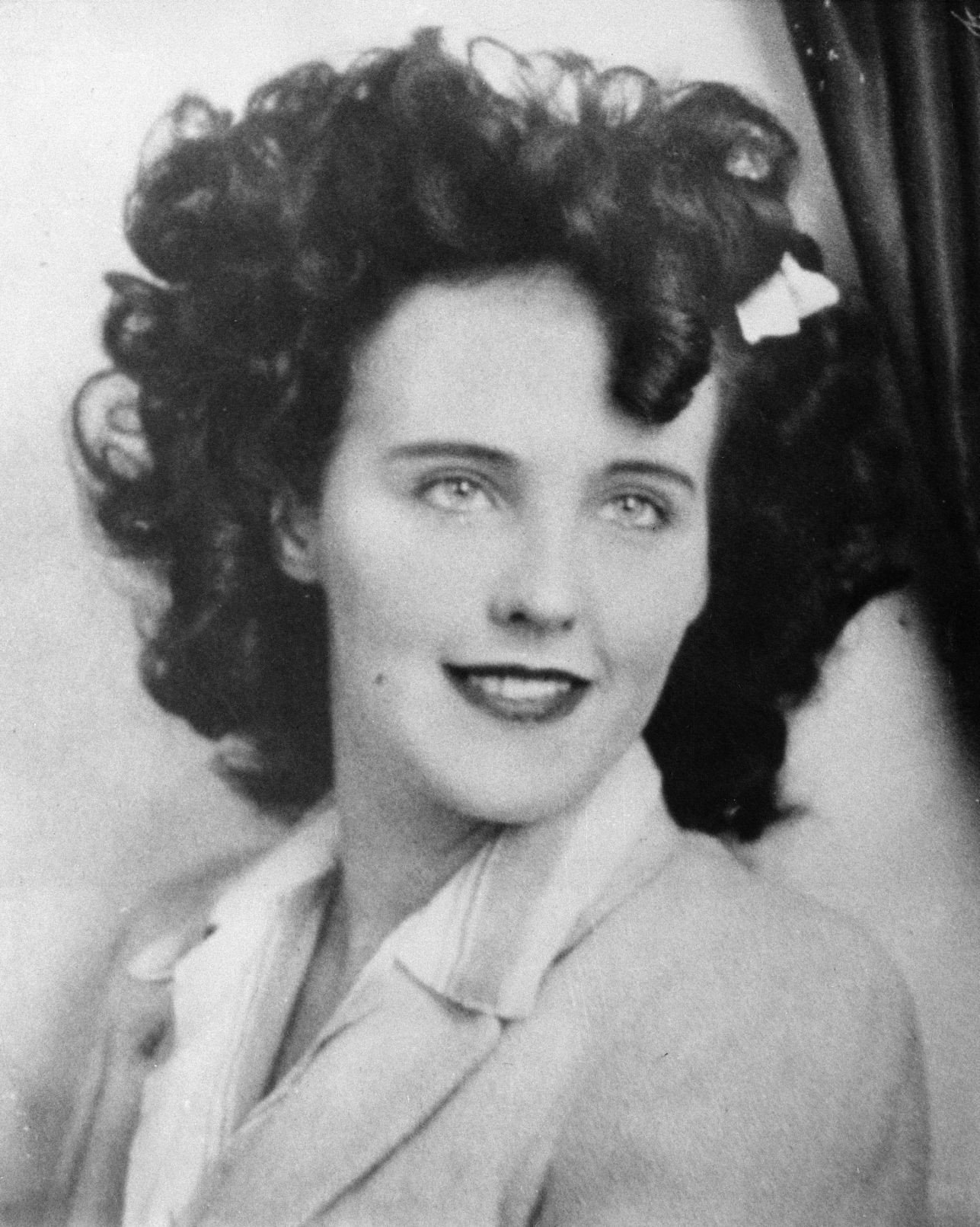The Black Dahlia Hoax: Brought To You By a Hollywood Studio
Part 2
Brought To You By a Hollywood Studio
OFFICIAL biographies place Elizabeth Short’s birthplace in Boston. Wrong. I’ll give you a hint as to her true identity. The real Black Dahlia’s nativity scene was more than likely Alexandria. Intel is simply doing all they can to pass notes in class without giving up the ghost. That being said, Boston is a major hub for the Jesuit ruling elite families. And while we’re at it, let’s just throw in a handful of Freemasons. They buy their donuts there too. The Bunch of Grapes Tavern on King’s Street in Boston became the first duly constituted and chartered lodge in the Americas. It’s all a hunch, but if I had to guess, Intel is simply giving the woken eyes one more clue as to who’s involved. Product placement. For example, had the project originated with Benjamin Franklin’s lodge, we might come to find that Elizabeth Short was born in Philadelphia. With Boston, we’re simply getting to know the Black Dahlia’s sponsors.
The Black Dahlia has her own Wiki page. It lists 1943–1947 as her “years active”—see what I mean? Are you trying to tell me she wasn’t activated until the age of 19, Wikipedia? Apparently, so. In Medford of all places. I checked. Medford is only a short five-mile stint outside of Boston and it has its very own Lodge. That’s where the Black Dahlia project was probably commissioned then in 1943. Great. If I ever see lights of red and blue in the rearview mirror while driving through Medford, I’m totally screwed. There’s no way I’m stopping for donuts. I’ll just hightail it out of town at a clean 5 miles per hour. Then again, even the cops in the Los Angeles case were probably all Freemasons.
 Elizabeth Short was 19 when she set out with her father, Cleo Short. The number 19 may be significant on account of the Sun Tarot card in the Major Arcana. The esoteric difference between 19 and 1 is that the Fool makes up the later, whereas the former is a higher vibration. 19 designates a new phase of life armed with knowledge and, quite unlike the Fool, is therefore prepared for what is to come.
Elizabeth Short was 19 when she set out with her father, Cleo Short. The number 19 may be significant on account of the Sun Tarot card in the Major Arcana. The esoteric difference between 19 and 1 is that the Fool makes up the later, whereas the former is a higher vibration. 19 designates a new phase of life armed with knowledge and, quite unlike the Fool, is therefore prepared for what is to come.
They ended up in Vallejo, California for a spiel. Still 1943. It is there where Cleo worked at Mare Island Naval Shipyard on San Francisco Bay. In mid-1943, while The War was hot, the father-daughter team moved to Los Angeles, but Elizabeth later accepted a job at Camp Cooke in Lompoc, California. Recognize the name, Camp Cooke? I didn’t either. Turns out, Camp Cooke later became known as Vandenberg Air Force Base. Today it is Vandenberg Space Force Base. Oh sigh. The Space Force is the Air Force’s latest spin-off (consider that the Air Force is a spin-off of the Army), but seeing as how there’s water above the firmament, you’d think they’d be better off sending up the Navy. But I digress. Vandenberg is NASA’s west coast port, telling us it is selected as an epicenter of propaganda. If you’re having a difficult time following along, Elizabeth Short was likely an Intel project from the moment she left Boston.
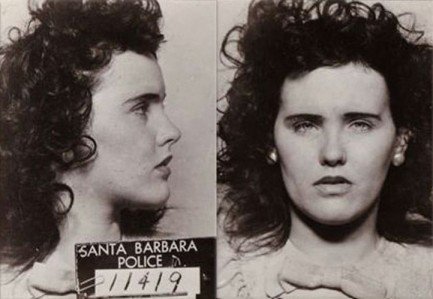
On September 23, 1943, Short was arrested in Santa Barbara for underage drinking. Bummer. Wasn’t she working on a military base during war time? She would have been surrounded by pilots contemplating their impending doom. I thought booze and STDs were more readily accessible than the flu. Either her training didn’t go so well and we are witnessing a broken robot needing pliers and a screwdriver, or the script was unfolding exactly as planned. You tell me. She was promptly sent back to Medford. Uh-oh. The Black Dahlia is getting reprogrammed in the back alley behind the coffee and donuts shop. She may have been underaged, as drinking is concerned, but why would the state of California send a young woman back to Boston, simply for receiving a DUI? Here, let’s try this again.
In Boston, 20-year-old Elizabeth Short was potentially commissioned again and then sent southbound to Florida. Already, Short had spent several winters in Florida due to her asthma—telling us she came from a family with money. This time around she hooked up with Major Matthew Michael Gordon, Jr., a decorated United States Army Air Force officer, then at the 2nd Air Commando Group, where he was training for deployment to the China Burma India Theater of Operations. We’re talking some deeply penetrated behind enemy lines stuff. We are told Gordon was in a plane crash over India but that he proposed and she accepted. A second plane crash on August 10, 1945 would announce his death, and with less than a week to go before Japan’s surrender.
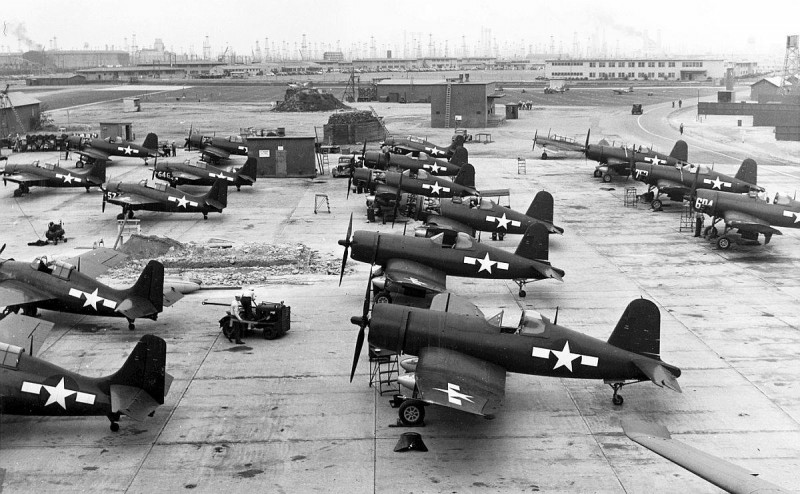
Short returned to Los Angeles in July of 1946 in order to pay a visit to Army Air Force Lieutenant Joseph Gordon Fickling, whom she had been acquainted with while in Florida. Who said California could keep her out? It is here, in the hundred or so miles ranging from San Diego to Los Angeles County, where Short would live out the final six months of her role life.
Her first known residence was a two-week jaunt at a downtown Long Beach hotel, a few miles away from where Fickling was station at the Army Air Field. Same city though. It is Fickling who paid the bills. The building at 53 Linden Avenue still exists. Though the neighboring drugstore is no more. That’s where Short received her name, you know. Black Dahlia. I get the fact that she had jet-black hair, but if Short had a habit of dressing in black, as we are told she did, then that is yet another tip-off as to the role she was attempting to embody. Still, how exactly does someone receive a nickname during a two-week stint? I have visited hundreds of places, staying at dozens of them for two week or more at a time, and nobody at the local drugstore or donut shop thought to name me, nor would they likely remember me if I washed up to shore six months later. The drugstore was probably just a front for spooks. Elizabeth Short simply arrived on a business trip—a hop and a skip from the office. You know, getting in character. Reorienting herself.
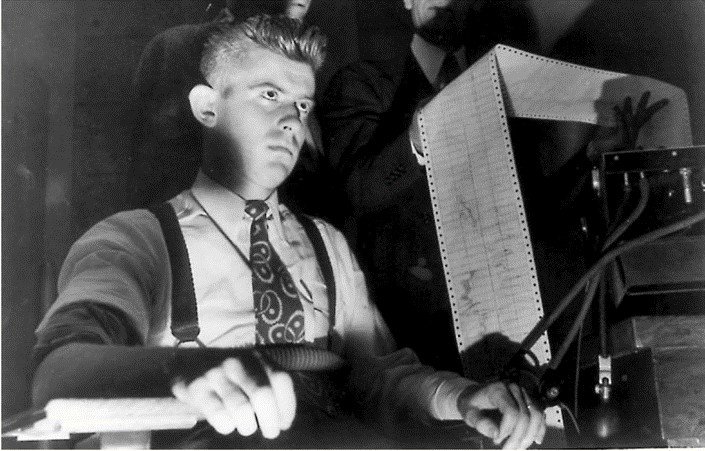
THE LAST person to see her alive was Robert Manley, but his friends knew him as Red. We are told the 25-year-old ex-Army corporal gave her a ride from San Diego to Los Angeles and then dropped her off at the Biltmore Hotel. As you might suspect, the buttons were all over Manley like stink on a monkey. Tell me this isn’t the scene from a movie. No, it is simply Red, taking the ol’ lie detector test down at the local Lodge. Is it another reenactment for dramatic effect, like the Betty Bersinger photos? We are not told. Such intensity though. And look at those squiggly lines. You had to have been there.
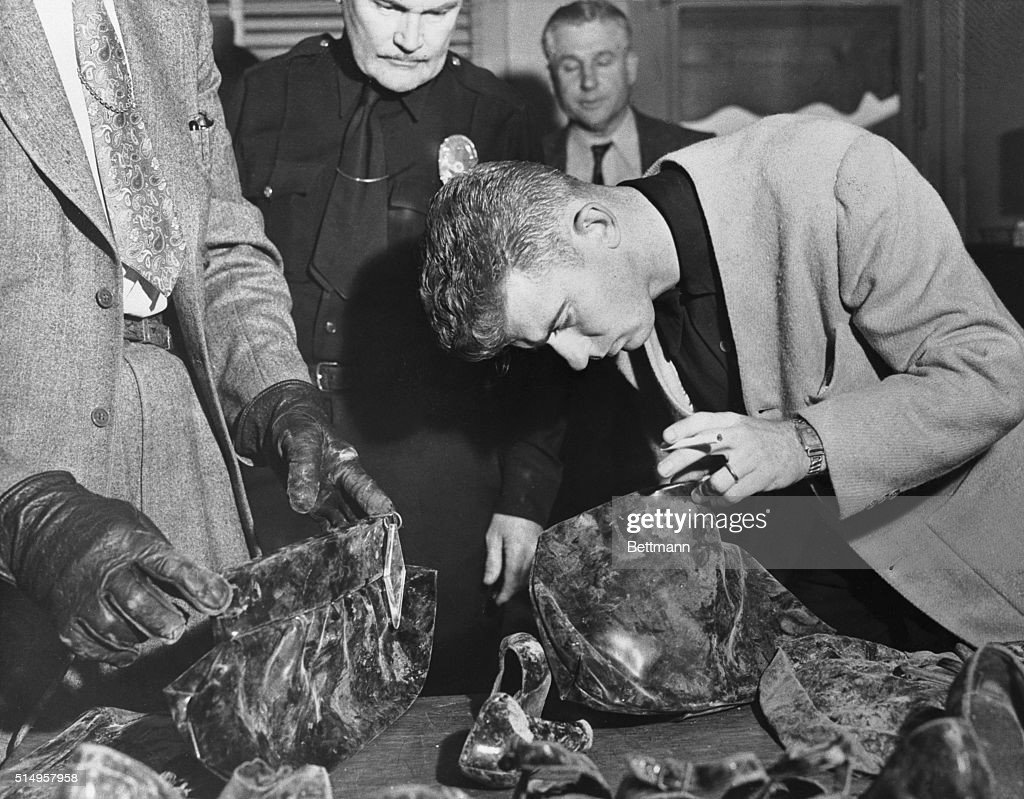
In yet another scene from The Black Dahlia movie, we see Manley in the police station, identifying a handbag and black suede shoe, which had been conveniently discovered on top of a garbage can, rather than inside of a garbage can. It’s almost as if the killer was indecisive about whether or not to throw them away or offer them up as a free prize to a passing bum. Should I have discovered a purse and a shoe sitting on top of a garbage can, I can guarantee you my first thought wouldn’t be, ‘I wonder if this belonged to that woman who was sawn in half!’ But I’m not the one writing this story, am I? Good thing Red is on the case. Helping investigators solve the case.
Our leading man is tall and handsome—no? He’s wearing a black shirt in this photo, whereas he wore a white shirt prior. So, we’re looking at a costume change. The purse and the shoe were discovered on January 24, same day in which the suspicious looking package, containing the address book, arrived at the Herald Express. If the killer were trying to prove his identity, why not send the purse and the shoe as well? And why only one shoe—was he keeping the other as a souvenir? The purse and the shoe were spotted near Norton Avenue, some 2 miles from where Short’s body had been found. That’s like 20 miles in L.A. measurements, but whatever. They were wiped clean with gasoline, destroying any fingerprints.
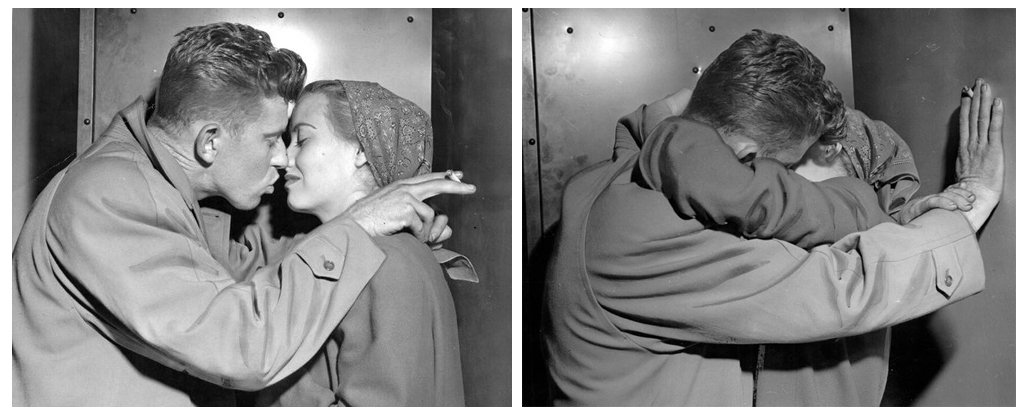
Naturally, his wife was pissed to learn what he’d been up to. But it looks like they made up for the press. Agnes Underwood, our favorite reporter, covered the story, in which the old dirt bag assured everyone that his getaway with Beth had sent back on the straight and narrow. Still in police headquarters? It appears so. Looks like the police offered Red another costume change. How nice of them.
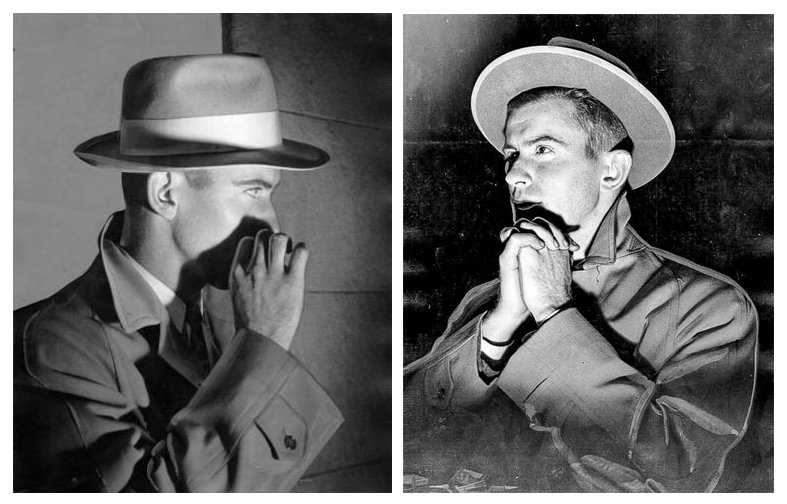
Such a productive photo-shoot. More shots of Manley. These would be perfect over the fireplace. Since when did mug shoots become glamor shots? Oh, Hollywood. The photographers name was Perry Fowler. I decided to look him up on the Intel-net and discovered an obituary by The New York Times. He died in 1966 at the age of 56. The paper says, and I quote: “Perry Fowler, a photographer whose World War II exploits read like a spy thriller…” Seriously, NY Times? You’re going to make it this easy for me? The Times then goes on to claim (really, you’re going to love this): “Mr. Fowler was director of photography for The Los Angeles Herald-Examiner. Except for his war service in the Navy and in the Office of Strategic Services, he had spent 38 years in Southern California journalism.” End quote. If you need this spelled out for you, they’re referring to the OSS. Mm-hmm, Southern California journalism was brought to you by the OSS. Any questions?
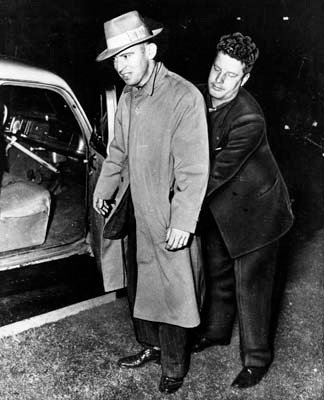
Manley’s stay at police headquarters may have been an all-expense paid vacation, courtesy of Hearst Productions, but it apparently comes at a cost, as the man frisking him is having a little too much fun. Is he even a fuzz? Looks more like Mickey Cohen’s obnoxious younger cousin. Same hat and overcoat as the Perry Fowler publicity shoot though—telling us he’s on his way in to be questioned.
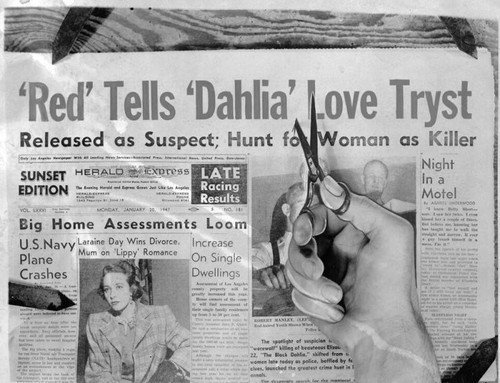
Wait, what’s this? Is it the hand of Elizabeth Short’s killer, cutting up the latest edition of the Herald Express for his next letter? We’re not told. You’d almost think the killer worked from a desk at the newspaper, but that’s probably none of my business. Just another scene from the movie, I guess.
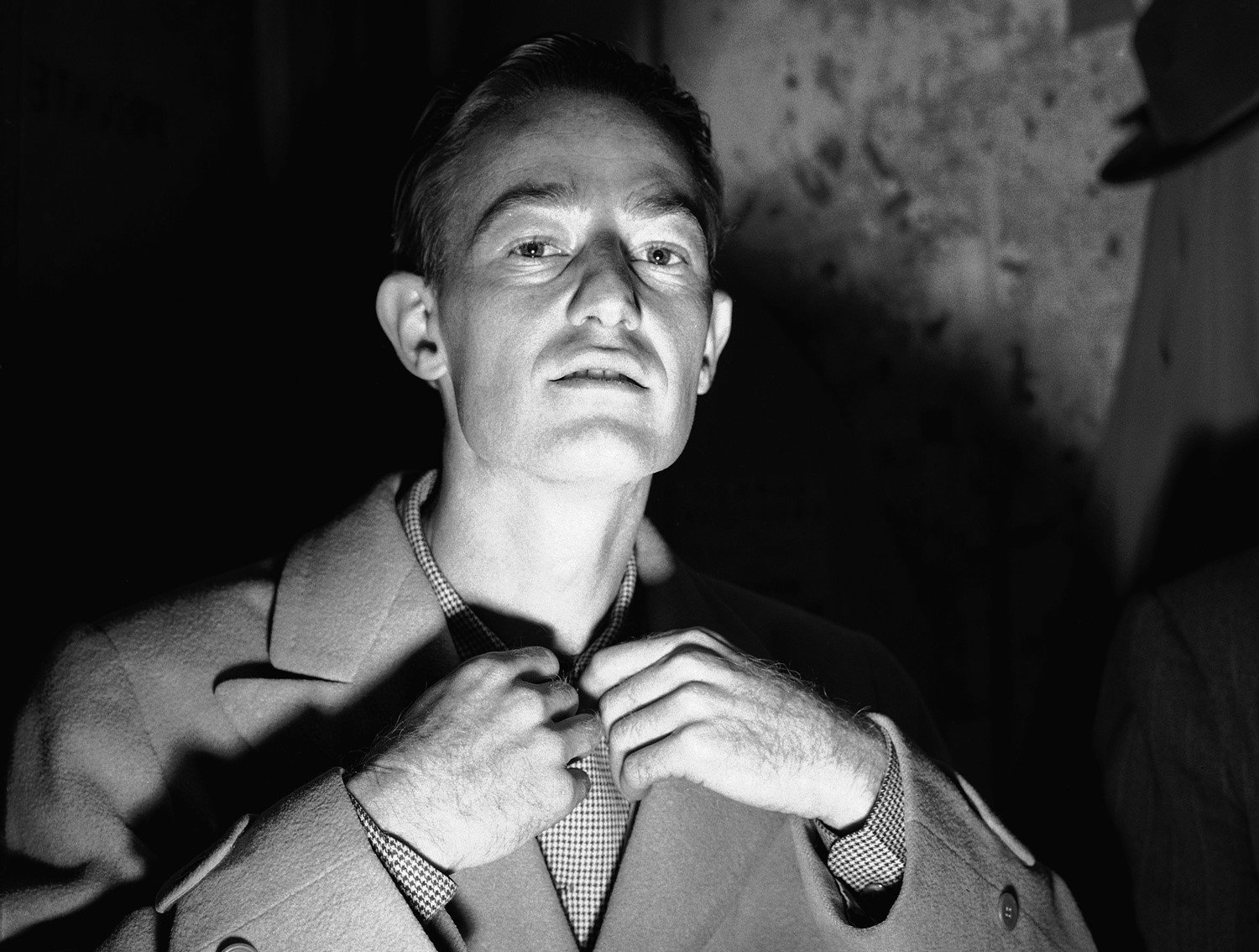
HEARST needed a kaleidoscope of personalities to fill his columns, naturally. That’s why they cast 27-year-old Leslie Dillon, aka Jack Sands. His character is described as a bellhop and former mortician’s assistant. Uh-oh. You’re probably thinking: Why is he a suspect though? Leave it to the fact that he was also an aspiring writer, and thought it might be a good idea to make LAPD psychiatrist Dr. J. Paul De River a pen pale, whereas he might confess his intense interest in sadism and sexual violence, seeing as how nobody was offering him any book deals. Right. During their correspondences, Dillon offered up one of his friends, a certain Jeff Connors, as a likely suspect to the Black Dahlia movie. Eventually, De River believed that Connors was a “make-believe friend,” existing only in Dillon’s imagination, and that it was he who had actually sawed the girl in half, not Connors.
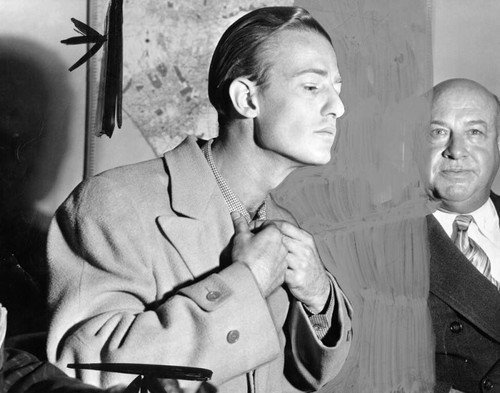 In December 1948, Dillon agreed to meet with De River and was given the choice of one of three cities: Los Angeles; Phoenix, or Las Vegas. Dillon chose Las Vegas. The story then becomes even more colorful, as De River and undercover LAPD officers hold Dillon captive for something like two days. Apparently, Dillon was able to sail a postcard from his window, pleading for help. A pedestrian found it on the street below and reported his predicament to the authorities. They then proceeded to drive towards San Francisco, where Dillon was incapable of finding Connors. After offering intimate details about the crime, facts apparently given to his by his “imaginary friend,” the buttons hauled his ass down to Los Angeles. Strange that he would have insider’s information when police surmised that he was in San Francisco during the murder, huh? You’d almost think he is a successful writer, after all, and likes to appear in the production.
In December 1948, Dillon agreed to meet with De River and was given the choice of one of three cities: Los Angeles; Phoenix, or Las Vegas. Dillon chose Las Vegas. The story then becomes even more colorful, as De River and undercover LAPD officers hold Dillon captive for something like two days. Apparently, Dillon was able to sail a postcard from his window, pleading for help. A pedestrian found it on the street below and reported his predicament to the authorities. They then proceeded to drive towards San Francisco, where Dillon was incapable of finding Connors. After offering intimate details about the crime, facts apparently given to his by his “imaginary friend,” the buttons hauled his ass down to Los Angeles. Strange that he would have insider’s information when police surmised that he was in San Francisco during the murder, huh? You’d almost think he is a successful writer, after all, and likes to appear in the production.
Once again, Dillon was given his very own photo-shoot in police headquarters. Obviously not a repeated performance, as his character cannot be found elsewhere on the Intel-net. The photographer tried various angles while Dillon repeatedly wrestled with his top collar button, hoping to cast him in the right light. Here we can see Dillon’s agent staring in. Or is he his handler? [EDIT: Oh, never mind. It’s only creepy Captain Francis Kearney.]
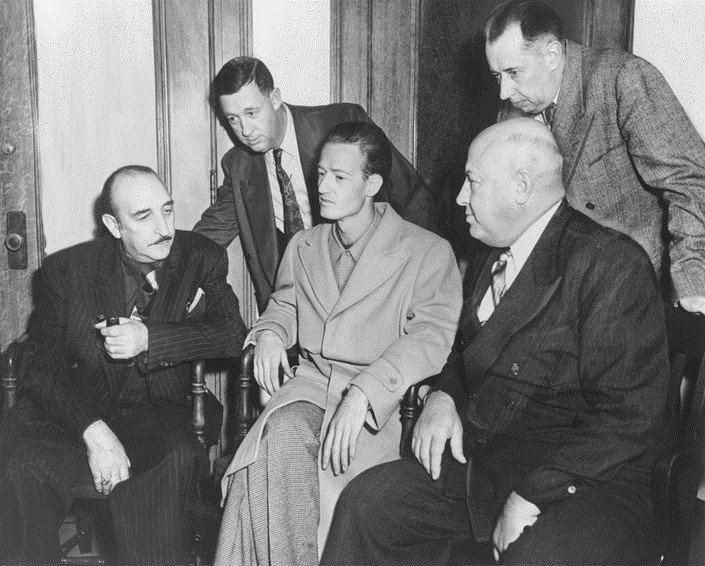
There’s the whole gang surrounding Dillon during the intense interrogation. Looks like Dillon is fully in character, complete with limp hands. No wonder why he and the button struggled so. Looks nice though. J. Paul de River is on the far left, looking a lot like Inspector Clouseau. Next, we find Detective Lieutenant William Burns and Chief of Police C. B. Horrall. Sitting stage right is Captain Kearney. Still pissed.
Their road trip to Las Vegas and San Francisco ultimately paid off, as investigators soon learned that Jeff Connors did indeed exist, only his real name was Artie Lane. Why would Artie Lane befriend Leslie Dillon in San Francisco and tell him his name was Jeff Connors? Probably for the same reason Jack Sands would tell police he was Leslie Dillon. Actors. Case in point, Artie Lane was employed in Hollywood by Columbia Pictures. You’ll probably want to take a note of that.
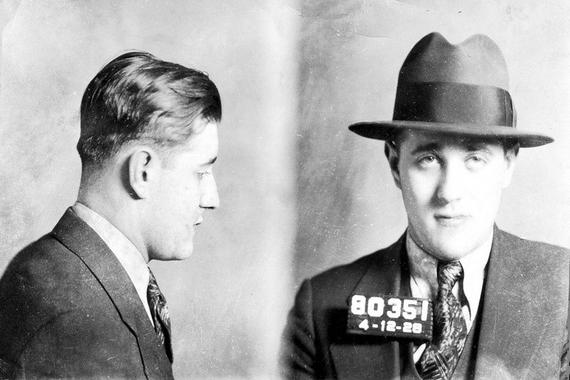
THEY like to throw Bugsy Siegel into the ring as a potential witness because he’s obviously a spook. Advertise your own, I guess. If you’re unfamiliar as to who Bugsy is, he was a mobster who had a movie named after him, but also a Joo. Best of both worlds. Bugsy built a criminal empire through bootlegging, gambling, and handshakes which involved bodies in trunks, before finally growing soft and setting up shop in a little desert town we know today as Las Vegas—an obvious Intel project—where he opened the famous Flamingo Hotel. The mobster helped to raise somebody named Michael Bowen. In turn, Bowen transformed The Sixties into performance art and, as we have already seen in past papers, had an intimate part in the ridiculous 1967 March to the Pentagon psyop. There’s more to this story, of course. It involves Bugsy’s right-hand man, Mickey Cohen, and The Los Angeles Times.
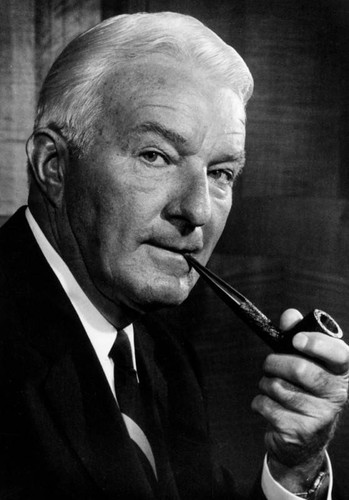
Norman Chandler was the publisher of The Los Angeles Times in 1945 and he was a suspect. But before him, his father was the publisher of the LA Times from 1917 until 1944, and even before that, his grandfather was the publisher from 1881 until 1917. Of course, the editor of The Times would be a suspect. Lets everyone know who’s your daddy. Hearst wasn’t the only big buckaroo in town. And besides, even newspaper men gotta eat. Might as well make news, if only to secure another trip to the lobster bar.
Apparently, Chandler impregnated Short while she was working as a call girl for Madam Brenda Allen, and we can’t have that. That’s where Mickey Cohen steps in, but even those details are rather vague. Allen had begun her labors as a sex worker in Los Angeles sometime in the 1930s, rising to prominence near the outbreak of The War as the successor to Ann Forrester, aka “Black Widow.” Forrester had previously run a $5,000-a-week prostitution syndicate but was convicted and handed a prison sentence. In turn, Allen would receive hers, but not without a little show-and-tell.
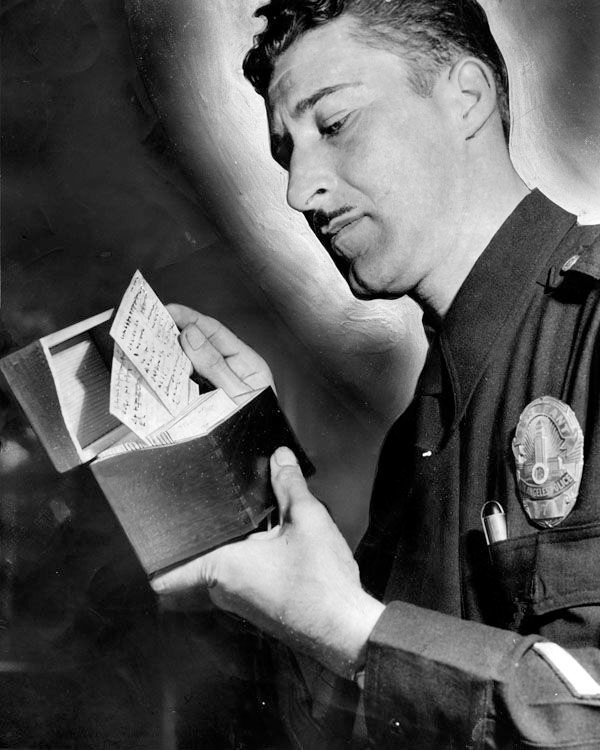
In 1948, an attempted robbery of Brenda Allen and her then lover, LAPD Vice Squad Sergeant Elmer Jackson (in which Jackson shot and killed the perpetrator), resulted in yet another nationwide scandal. During a raid on the Allen’s bordello at 8436 Harold Way above the Sunset Strip, police then confiscated a conveniently displayed box of index cards containing the names, contact info and sexual predilections of about 250 men whom The Los Angeles Times described as “notables of the film colony.” The list was teased by never released. Even the photo looks fake.
Up to this point, Jackson had been attempting to shake down Mickey Cohen. In turn, and at an unrelated trial, Cohen announced that he had recordings between Jackson and Allen made from police headquarters.
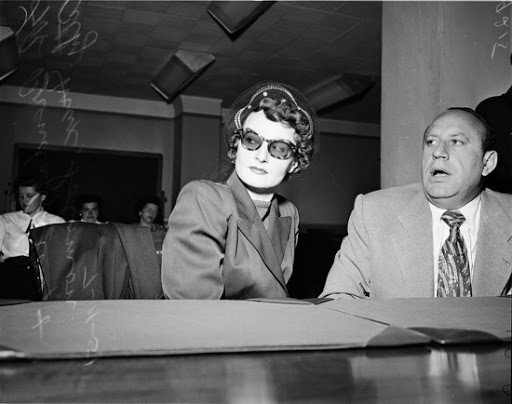
The short of it is this. Allen was paying for police protection, and even the fuzz were on her naughty positions list. In the end, badges were tossed into drawers and everybody walked except for the Hollywood Madam. Probably just another story conjured up by the press, as Elizabeth Short was a fake call girl, and Brenda Allen looks like the sort of woman whose number you dial when you need a fake scandal cooked up.
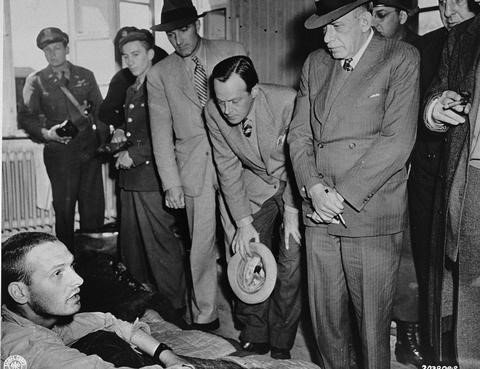
And anyways, just look at Norman Chandler at the Buchenwald concentration camp, third on the left. It is April of 1945. Learning the craft. Creating the news. Working for his employers. Getting his story straight with the other storytellers.
But before taking over the family business, a background check on Chandler shows that he attended Hollywood High School. Not impressed? You will be. Here’s something that I missed in my Manson papers. Vincent Bugliosi and Sharon Tate attended the very school. Hollywood High. Small world. Embarrassing tidbit to miss out on, I know. It’s the little details. But that’s only the beginning. A search on the Intel-net will find hundreds of notable graduates rising from the hallways of Hollywood High. I’ve pulled just a few for your consideration.
Carol Burnett, actress. Alan Ladd, actor. Carole Lombard, actress. Lana Turner, actress. Ricky Nelson, singer. Sarah Jessica Parker, actress. Judy Garland, actress. Mickey Rooney, actor. James Garner, actor. Alan Hale Jr., actor. John Huston, director. Frank Darabont, director. Chuck Jones, animator. Rob Grill, musician. Jill St. John, actress. Laurence Fishburne, actor. Keith Carradine, actor. Robert Carradine, actor. Tuesday Weld, actress. Rita Wilson, actress. Fay Wray, actress. Meredith Baxter, actress. Brandy, singer. Cher, singer. Lon Chaney, Jr., actor. Johnny Crawford, actor. Mike Farrell, actor. John Ritter, actor.
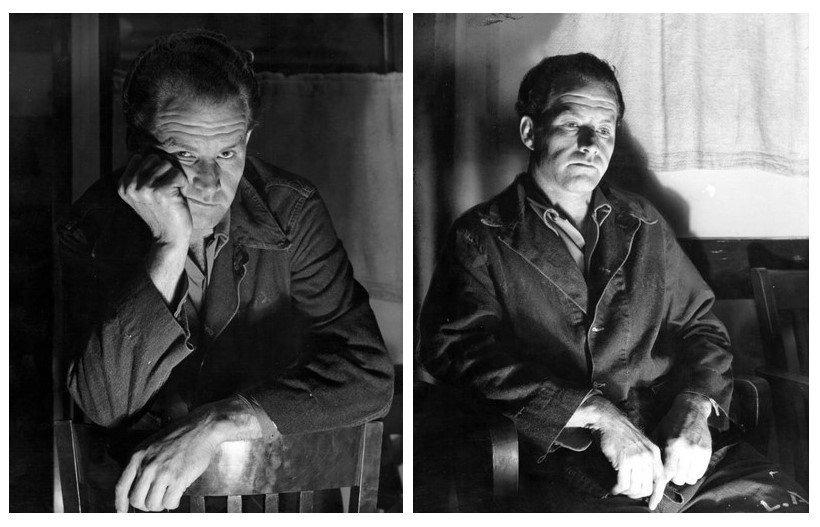
THE LIST of suspects runs on and on, much like the names arising from Hollywood High School. For whatever reason that makes absolutely no sense whatsoever, Daniel Voorhees decided to call up the Lodge and confess to the killing. He was then eliminated as a suspect as his handwriting did not match the killers. Bummer. Perhaps they should have given him a Hearst owned newspaper and asked to see a demonstration of his cutting and pasting skills—but no. Look at the ominous lighting Voorhees was painted in for his very own photo shoot. Probably another Perry Fowler original.
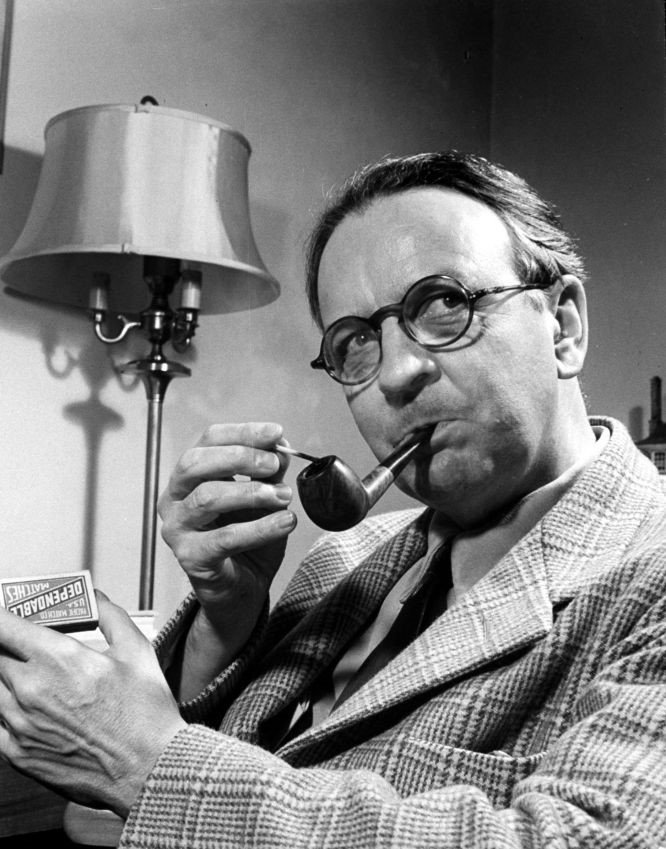
IN my earlier report, I made specific mention of the fact that Raymond Chandler had already eerily described the Black Dahlia narrative in his 1939 sleuth novel, The Big Sleep. I even confessed that he was Intel without so much as taking a sledgehammer to my own cognitive dissonance. So many regrets. Before becoming accredited as the creator of the “hard-boiled” detective genre, Chandler was a Royal Air Force pilot. He was friends with MI6 agent Ian Fleming. The two appeared together on the BBC. And we also find associations between Chandler and Alfred Hitchcock who—in turn—had connections of his own to British Intel.
The plotline to The Big Sleep goes something as follows. Chandler has Philip Marlowe, the familiar protagonist of his crime literature, follow a prominent general’s wild daughter to a flop-house where secret porn is being filmed and girls are drugged and coaxed into sexual acts. The film adaptation, which starred Humphrey Bogart and Lauren Bacall, was released in August of 1946, less than half a year before the Black Dahlia murder, and isn’t that something? That same year, in 1946, Philp Marlowe’s first original screenplay hit the big screen. Are you ready for this? It was called The Blue Dahlia.
Spooks in the Long Beach drug store named her after the movie.
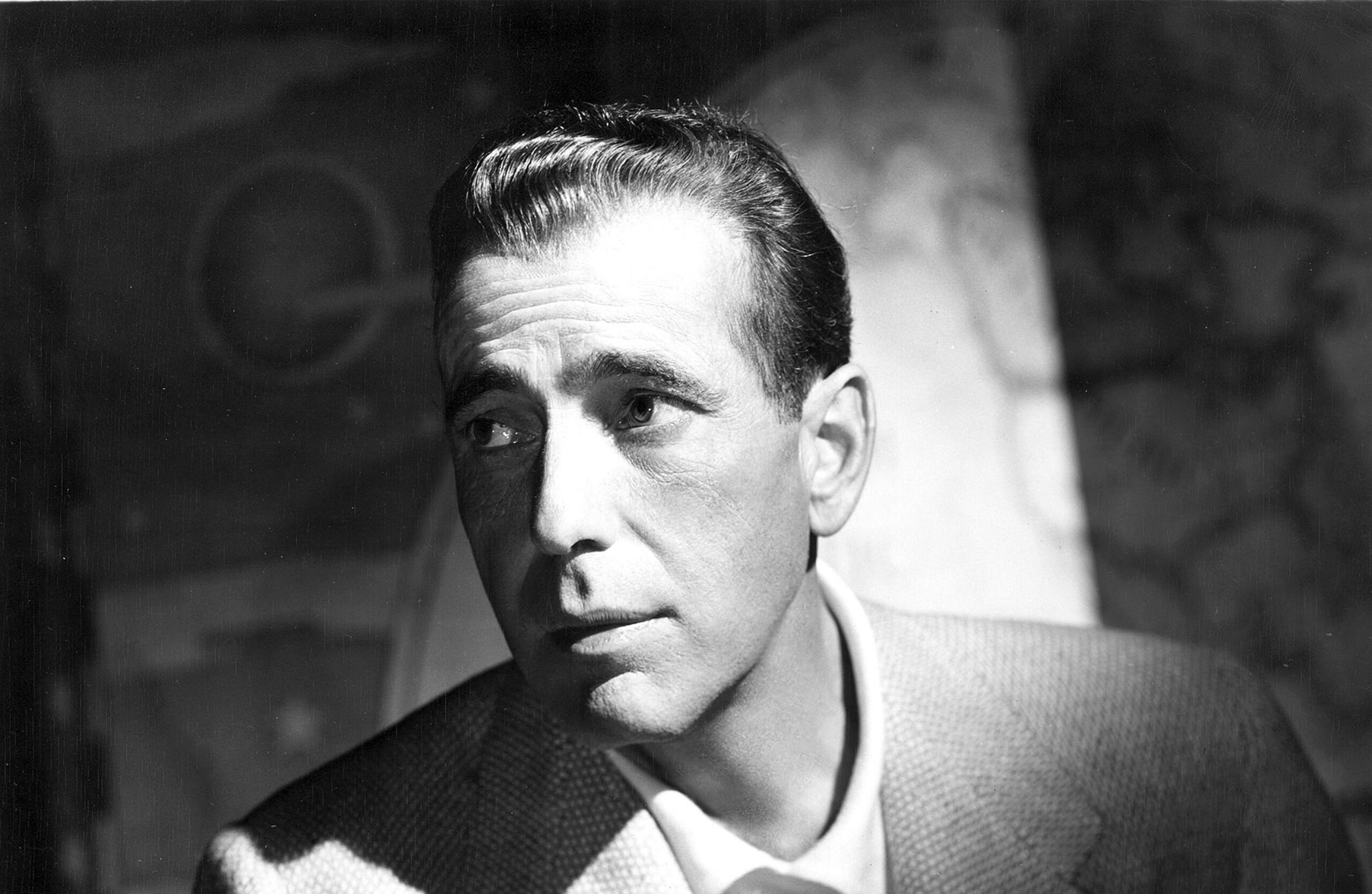
Bogey may have not been the first actor to portray Marlowe on screen, and certainly not the last, but upon the books transfer to film, most would consider him to be Chandler’s quintessential creation. And now for some genealogy. I found 3 Mayflower passengers in his family lineage. John Howland was his 7th great-grandfather. 8th great-grandfathers include William White and Reverend John Robinson. And get this. His 6th great-grandmother, Ann Pudeator, was executed for witchcraft in the Salem Witch Trial hoax of 1692. Similarly, Walt Disney is the 6th great-grandson of Reverend George Burroughs, executed for witchcraft, while Lucille Ball is the 9th great-granddaughter of Salem witch Rachel Vinson. See what I mean? Every person just mentioned holds a special place among the children of Cain. Another convicted witch in Salem is Mary Perkins Bradbury, Bogart’s 6th great-grandaunt via John Perkins. In the world of spooks, being related to a Salem Witch gets you places.
From Plymouth, I found 11 sureties of the Magna Carta in his direct lineage. 21st great-grandfathers include John de Lacy, Gilbert de Clare, and Robert Fitz Walter. 22nd great-grandfathers include Hugh le Bigod, William d’Aubeney, Richard de Clare, Robert de Ros, Saher de Quincy, Roger le Bigod, and Henry de Bohun. His 23rd great-grandfather is Geoffrey de Say.
Moving on down the line, King Louis VI of France is his 24th great-grandfather. William the Conqueror is his 25th great-grandfather. King Robert I of France is his 30th great-grandfather. Alfred the Great, 31st great-grandfather. And finally, Charlemagne, 33rd great-grandfather. Bogart is the blood of a different color, and that is blue.
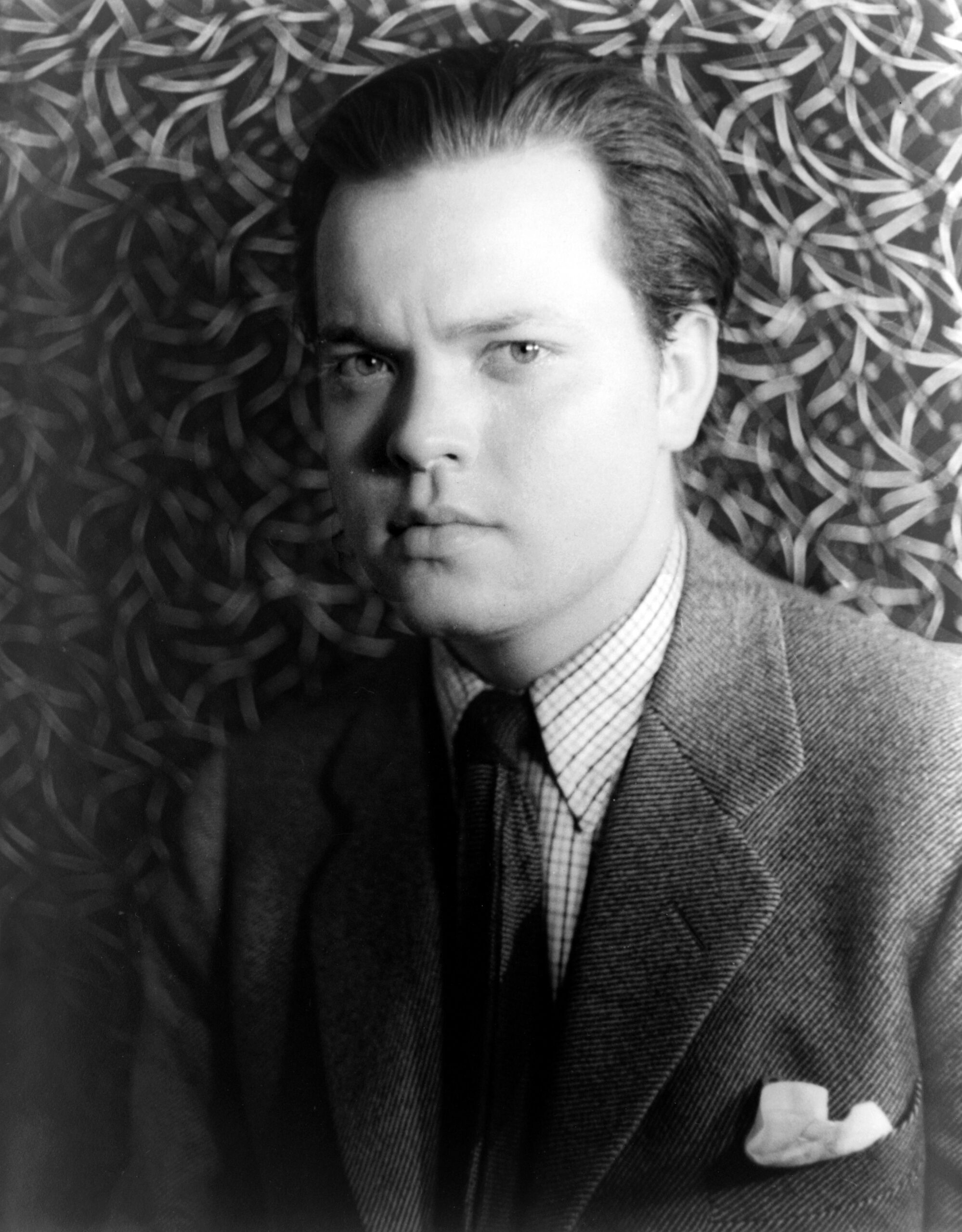
THERE is still but one more genealogy to cover today, and it concerns the killer. Orson Welles. Didn’t Welles play Hearst in a movie once? Hearst must have been a fan. Technically, The Black Dahlia was a magical act, and Welles was a renowned magician. Therefore, he couldn’t possibly be the killer, as we are only dealing with everybody’s favorite saw in half trick. But first, before we get to those details, his family linage.
With Welles, we find 3 Mayflower passengers. John Alden, Francis Cooke, and Richard Warren are all 8th great-grandfathers. And like Bogart, his 7th great-uncle Captain John Alden was accused of Witchcraft in Salem. They’re all related. I then found Magna Carta Sureties in his parentage. 8 of them in all. John de Lacy and Gilbert de Clare make up his 21st great-grandfathers. Hugh le Bigod, Richard de Clare, Saher de Quincy, Henry de Bohun, and William de Mowbray are all 22nd great-grandfathers. Roger le Bigod takes up the rear as his 23rd great-grandfather.
Moving on down the line, King Edward I of England is his 19th great-grandfather. King Henry III of England, 20th great-grandfather. King Louis VI of France, 24th great-grandfather. William the Conqueror of England, 25th great-grandfather. King Robert I of France, 30th great-grandfather. Alfred the Great, King of the Anglo-Saxons, 31st great-grandfather. And last but certainly not least, Charlemagne, King of the Franks, 33rd great-grandfather. Conclusively, he’s a Cain.
During the War, “and as part of his “Mercury Wonder Show,” Welles performed for soldiers on the very site where the body of Elizabeth Short was found. Specifically, he sawed women in half. He originally performed the trick on his wife Rita Hayworth until Columbia Pictures banned her from participating. Wait, didn’t Jeff Connors work for Columbia? That’s probably only a coincidence. He then performed the trick on two other girls. The first was Marlene Dietrich. Before I tell you who the second girl is, you may want to hold onto something. I am not responsible for any injuries acquired while reading my work. That person was Marilyn Monroe. They’re 8th cousins. Also, Marilyn Monroe was a man. But you probably knew that already.
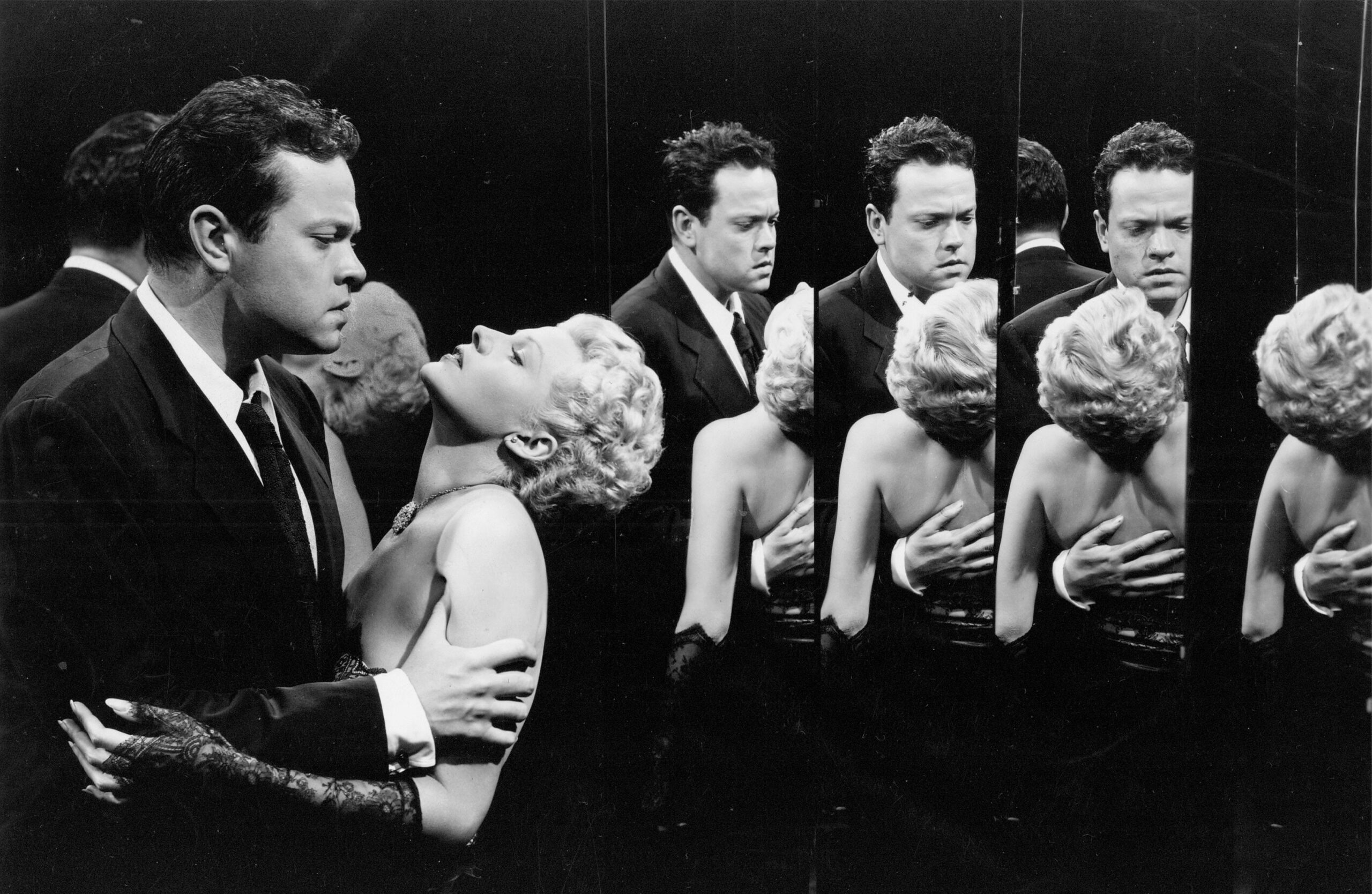
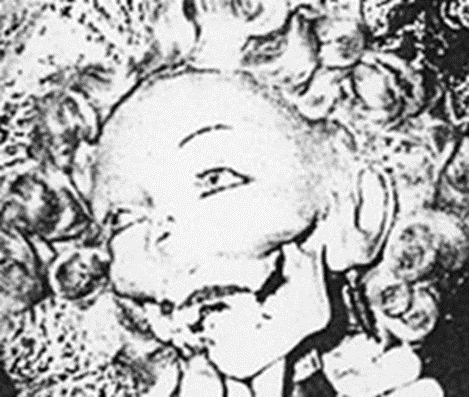 The magic doesn’t end there. Welles movie, The Lady from Shanghai, was made in 1946, but it wasn’t released until 1948. It starred Rita Hayworth playing opposite himself, and if you recall, Intel named an atomic bomb in the Bikini Atoll after Hayworth. So, busy girl.
The magic doesn’t end there. Welles movie, The Lady from Shanghai, was made in 1946, but it wasn’t released until 1948. It starred Rita Hayworth playing opposite himself, and if you recall, Intel named an atomic bomb in the Bikini Atoll after Hayworth. So, busy girl.
There’s one specific set design in the movie—a twisted fun house of mirrors—involving confession and murder. Also, the split psyche. Welles specifically wanted severed limbs and mutilated faces to embody the stage. Mannequins littered the scene. Particularly odd about these mannequins however are the lacerations virtually identical to those inflicted upon Short. Glasgow smile. There are cuts ear-to-ear just below the zygomatic arch.
In one of Elizabeth Short’s last letters home, her sister Virginia claimed she had written that a movie director was going to give her a screen test. I knew it. A clue. Short was a mannequin all along. Robert Manley’s trip to San Diego and back was something akin to Weekend at Bernie’s. Another Welles connection is the reported fact that he and Short frequented Brittingham’s restaurant in Los Angeles. We know this because the waitresses who worked there, who I can only suspect doubled as actresses, claimed Short was going out with someone at Columbia Pictures. Also, his name was George, which just so happens to be the director’s full name. George Orson Wells.
On the day in which the killer mailed a packet to Los Angeles newspapers, January 24, Welles applied for his passport and then spent the next 10 months in Europe, despite not completing the editing of Macbeth, the film he was currently directing and starring in. The scene containing the mannequins was ultimately deleted from the film by Harry Cohn. The fact that they were created three months before her murder is probably just a coincidence and is in no way intended as viewer programming. Only a photograph or two survive as testimony to the scene.
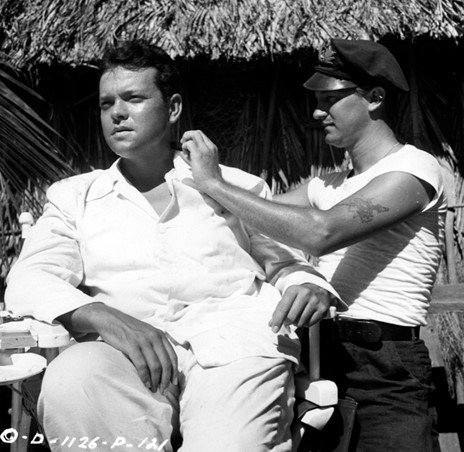
CONSTRUCTION of the mutilated mannequin heads was overseen by make-up artist Bob Schiffer. I decided to look further into this Schiffer fellow, and wouldn’t you know it, as specialist in women’s makeup, Schiffer was often credited with developing the “1940’s look.” Go figure. What is the 1940’s look—you ask? I had the same question. Red lips and thin, arching eyebrows. That’s Schiffer’s signature. Apparently, the Glasgow smile is another one of his signatures, but he’s mainly uncredited for that.
Here we can see Bob Schiffer cozying up with George-Porgy, giving him the right look. Some of the other faces he made up in Hollywood were Rita Hayworth, Joan Crawford, Ingrid Bergman, Cary Grant and Errol Flynn, as well as Fred Astaire and Ginger Rogers. Did he make up Elizabeth Short’s face? We are not told. Much of Schiffer’s early work is uncredited anyways. Gis aboriginal film is believed to have been ‘The Last Days of Pompeii’ in 1935, in which make-up was applied to hundreds of extras who were then promptly thrown to the lions.
The Intel-net tells me Schiffer was best known for the 1962 film Birdman of Alcatraz, in which Burt Lancaster ages from 18 to 80 in 143 minutes. We are told it was “a painstaking transformation that took two and a half hours each morning,” in which Lancaster was applied “with rubber jowls, a beard and a toupee of thinning hair.” After persuading the actor to shave his head, he then “wrinkled Lancaster’s skin by hand, stretching it with tape and letting it crawl back into place.” Impressive. You have to wonder how many hours the makeup department put in to the Elizabeth Short movie.
Several hundred other films are attributed to Schiffer. Here’s just a few of them. A Night at the Opera. The Wizard of Oz. The Lady from Shanghai. An American in Paris. Gigi. Judgment at Nuremberg. What Ever Happened to Baby Jane? My Fair Lady. And Something Wicked This Way Comes. Starting in 1968, Schiffer became head of the makeup department at Disney. It was a position he would hold until his retirement in 2001. Remember when Dean Jones became a dog in the Shaggy DA? Schiffer. And then there was that time when Daryl Hannah became a mermaid in the Ron Howard movie. Schiffer again.
And wouldn’t you know it, The New York Times tells us he lent his services to law enforcement, but also the military. Here they write: “He helped with camouflage work in World War II, and in 1961, during the Bay of Pigs invasion, he made up United State operatives to look more Cuban.” Wait, hold on. Hollywood had a part to play in the Bay of Pigs invasion? Say it ain’t so. The Intel-based newspaper further states that Schiffer “created mock wounds for hundreds of marines and sailors as part of battlefield training exercises.” Once again, The NY Times is far too generous in what their willing to offer up. Perhaps they simply expect your cognitive dissonance to win the day.
Noel
